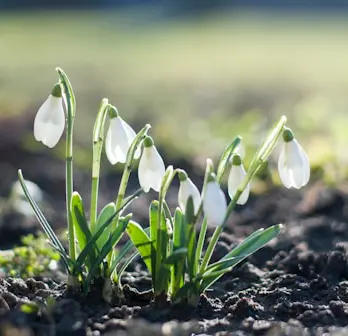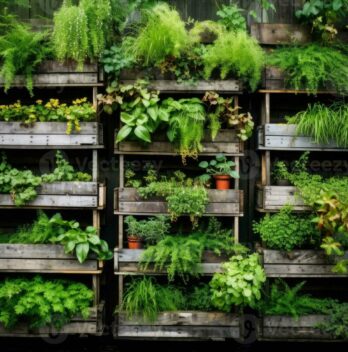You can soak beans before planting and make the germination process faster, which can sometimes be derailed by external factors.
Why pay more for
One of the easiest ways to guarantee germination for your green beans is to germinate them in water. When kept moist for several days, the outer shell cracks open and begins to sprout without having to push through any
Soaking seeds in water increases your germination rate and reduces potential diseases that prevent the seeds from proper germination.
Which Seeds Are Appropriate for Soaking?
Seeds with hard coats are the best for soaking. They include beans, peas, pumpkins, squash, corn, etc. Smaller seeds like carrots, lettuce, radishes, and the like are hard to soak and don’t need it at all.
But do you know you can soak your flower seeds before sowing? For example, sunflower, sweetpea, lupine, and nasturtium take to soaking very well.

How to Soak Beans Before Planting
This is an easy process. However, the three ways you can do it are as follows:
- Option 1. Put the seeds in a shallow bowl and cover them with water. Leave them for several days, observing them daily until you see them sprouting. Once they are fully sprouted they are all ready for planting.
- Option 2. Soak in an acidic environment by adding a tablespoon of coffee or a few drops of kitchen vinegar. The idea is to create conditions where the seeds first get warm and dump to germinate. The acidic environment creates the warmth that the seeds need to germinate quickly.
- Option 3. Use a wet paper towel or napkin for germinating your green bean seeds. Wet your paper towel with water but don’t make it too wet. Lay the paper towel on a clean surface and spread a single layer of seeds, leaving enough room between them and around the edges. Fold the other half of the towel over or lay another towel on top of the seeds. Secure the borders to ensure no seed falls out and set them aside. Place the wrapped seeds into a Ziploc bag or a jar and tightly shut them to hold in moisture and keep them in a warm area out of direct sunlight. Check for sprouting after five days by opening the paper towels likely and peeking in without unwrapping all of the seeds. If they haven’t germinated yet, reseal the bag and leave them for a few more days.
How Long to Soak Bean Seeds Before Planting?
Soak your seeds long enough for them to swell but not too long before they begin to turn sour and rot. Overnight is a reasonable amount of time, although many sources recommend 8 to 12 hours and no more than 24 hours.
Too much soaking will cause the seeds to start decomposing. If you use boiling water, the soaking time decreases. Most people swear by using warm water and soaking at bedtime and removing them first thing in the morning. Hard seeds like beans benefit from scarification before soaking, but be careful not to puncture the seed completely.
Other Considerations: Soak Beans Before Planting
Don’t soak your seeds the night before rain is expected but wait until the forecast promises a good planting season. This helps you be able to get into the garden and not compact the
Remember, just because you soaked your seeds doesn’t mean you will not need to water them as soon as you plant them. Your seeds will only hold the right amount of moisture around the seed, not around the
For those who use damp paper towels for germinating the seeds, be delicate with the seeds when moving them to the garden or the pot to avoid breaking the stem or root. Don’t worry if the shoot is on its side; gravity will help it find its way down or up.
Saving Green Bean Seeds – Step by Step
So to be able to plant your seeds, you will need to have saved them from the previous harvest. Saving green bean seeds is easy; all you have to do is follow a few steps.
2-Pack Seed Sprouter Tray BPA Free PP Soil-Free Big Capacity Sprouting Container Kit with Lid
Step 1: Choose the best
Select a few healthy plants you would want to save the seeds from until the final harvest. Select the first plants to produce mature beans, tall and robust with dark green leaves with a high number of pods.
Step 2: Mark the seed-grown plants and wait
To ensure you don’t destroy your harvest early, you can try tying something around them. Let the pods grow to maturity before you harvest them.
Step 3: Pick the dried-out pods
Please wait until the pods turn completely brown before you harvest them. There should be no green on them at all. You will know the seeds are ripe when you shake the pods and hear the rattle of beans moving around inside. Squeeze the pods, and they should be crunchy to the touch, then you know they are ready to pick.
Step 4: Remove the seeds from the pods
Once you harvest the dry beans, remove them from the pods safely without damaging the seeds. Examine every seed, saving only the perfect ones. Throw away any seed eaten by insects, wrinkled, or has a different color from the rest of them.
Place the seeds on a paper towel to air dry for several days and finally, store them in a clean, dry container that is labeled waiting for the next season to plant them.

How to Germinate Beans Fast
You may be wondering what the quickest way to germinate beans is. While many beans can be germinated both indoors and outdoors, I find it best to do it inside, where you have control over all factors. When they’re ready to grow outdoors, they can be transplanted outside with ease.
Some quick germination methods for beans are:
- Method #1. Place seeds in a bowl and cover with water. Leave in a warm, dry place and check daily. After a few days, your beans should begin to sprout.
- Method #2. Grab a seed and try to fill each hole with potting
soil . Add seeds to thesoil and keep on a heat mat. - Method #3. Grab a paper towel and soak it in water. Rinse the towel until it’s moist, but not dripping. On one side of the towel, add the seeds and then fold the other half of the paper towel over the top. Add the towel to a plastic bag and keep it at room temperature, out of direct sunlight.
It’s important to keep the conditions as ideal as possible during germination, as this is the most important time of a plant’s life. Some key factors you should consider are:
- Warm environment. Germination is sped up by a warm environment, so using grow lights, a heat mat, or even the use of a greenhouse will aid your germination.
- Weather. It’s best to plant seeds when the
soil is at its warmest, which is often during the day. Some say that it’s best to soak your seeds in warm water, and then place them in warmsoil , around late morning.
What Do Green Beans Look Like When They Sprout?
You may be curious as to what
- The first stage is the seed. This is what it starts as, and what needs to be planted for your seed to grow.
- The second stage is germination. This stage is sometimes also known as sprouting. This means that the roots of the plant are beginning to form. At this point, they’ll be loops start to form in the
soil . They’re usually firm and thick. - The third stage is growth. This is the stage where your beans will really start to take shape. You’ll often notice that the leaves at the bottom are the largest; this is to ensure the plant can absorb everything it needs to thrive. At this point, you should also see the beginnings of a small plant.
- The final stage is flowering. With plants such as
green beans , you can expect them to flower after around two months. At this time, you may notice that wildlife such as insects and birds are interested in your plants.

Can I Plant Fresh Green Bean Seeds?
It’s not recommended to use fresh green bean seeds for your planting, but instead, it’s best to leave them on the plant until they start to change in color and rattle when shaken. This is likely to take a few extra weeks, but it’s the best way to do this. Once you’ve harvested them, take them out from the pods and leave them inside for a few weeks. Once ready to plant, shell them.
Final Thoughts: Soak Beans Before Planting
To soak
Do you have any tips or tricks when it comes to soaking beans before planting? If so, please feel free to let us know in the comments below. And remember, sharing is caring!
FAQs
Do green beans need to be soaked before planting?
Green beans are one of the easiest vegetables to grow, but they do have a few quirks. They require a long growing season, but if you have a greenhouse, or can plant them early in your garden, they will produce well.
Yes. Green beans must be soaked in a solution of water and potassium nitrate for at least 6 hours, up to 24 hours. Potassium nitrate is available at your local garden center. This step will help the bean seeds to germinate more quickly, as well as make them more resistant to disease.
If the instructions say to soak them for 24 hours, then they are probably just referring to an old-fashioned method of planting.
Newer methods call for rinsing the beans to get rid of any excess dirt and sand, and then planting them right away. I don’t think soaking for 24 hours is necessary. If you soak beans in a solution of water and salt, it helps prevent bean disease. There are two diseases that can affect beans. The most common is Fusarium wilt, which occurs when the soil is too wet and cool and the roots have no air circulation. Soaking the beans in a solution of water and salt is supposed to kill off any spores that might be on the beans when they are planted. The other type of bean disease is Phythophthora root rot. This occurs when the soil is too dry and hot, with no air circulation. Soaking beans in a solution of water and salt also kills off any spores that might be on the beans when they are planted.
How do you soak green beans?
Soaking beans is very easy. Just place the seeds in a bowl and cover them with water. Let the seeds soak for at least 8 hours or up to 12 hours depending on your beans. After they are soaked, drain the seeds and place them in a mesh bag (or paper towel) in a warm place where they will germinate. You want the temperature to be around 80 degrees Fahrenheit. The ideal temperature for germination is between 70-80 degrees.
The seeds need light but not direct sunlight. If you put the seeds in direct sunlight, they may get scorched. Keep the seeds out of the fridge or freezer because this can stop the germination process.
How do you dry green bean seeds for planting?
Depends on how much seed and the climate you live in. It is not necessary to dry them completely. They will germinate more easily if they are moist, but not soaking wet. If your seeds are damp or wet, you can place them on a cookie sheet and put it in an oven on the lowest setting, about 200 degrees F for an hour or two. This will dry them out just enough so they will sprout.

Brian believes the best days are spent outside with soil on your hands. He finds his rhythm in the details of the garden—from carefully tending to established plants to the excitement of propagating new varieties. A true outdoor enthusiast, Brian is here to swap stories, share advice, and celebrate the rewarding work of growing.





